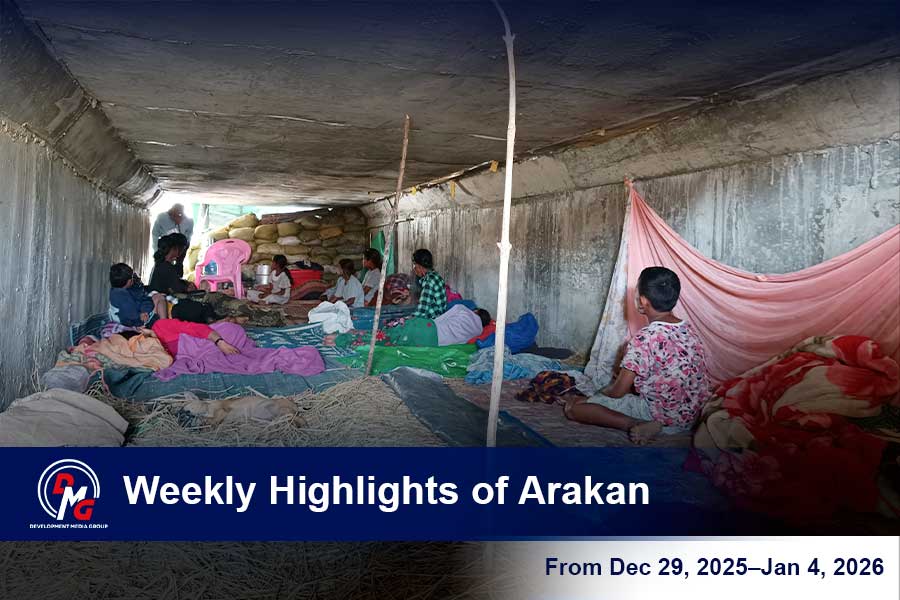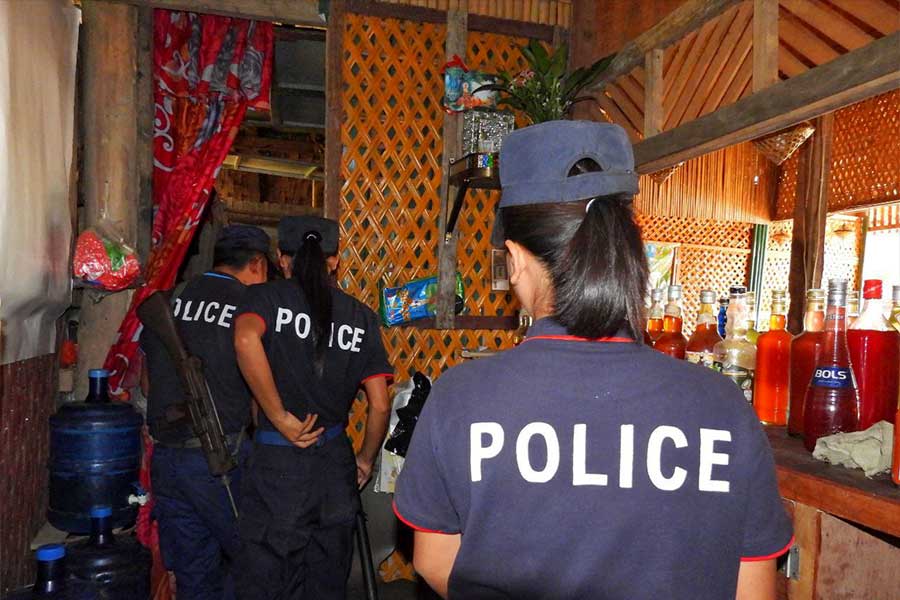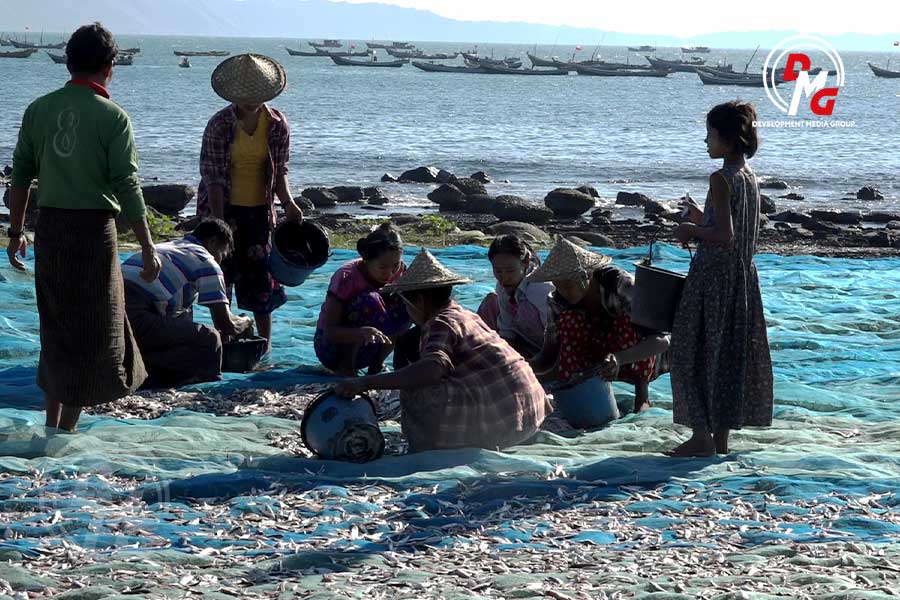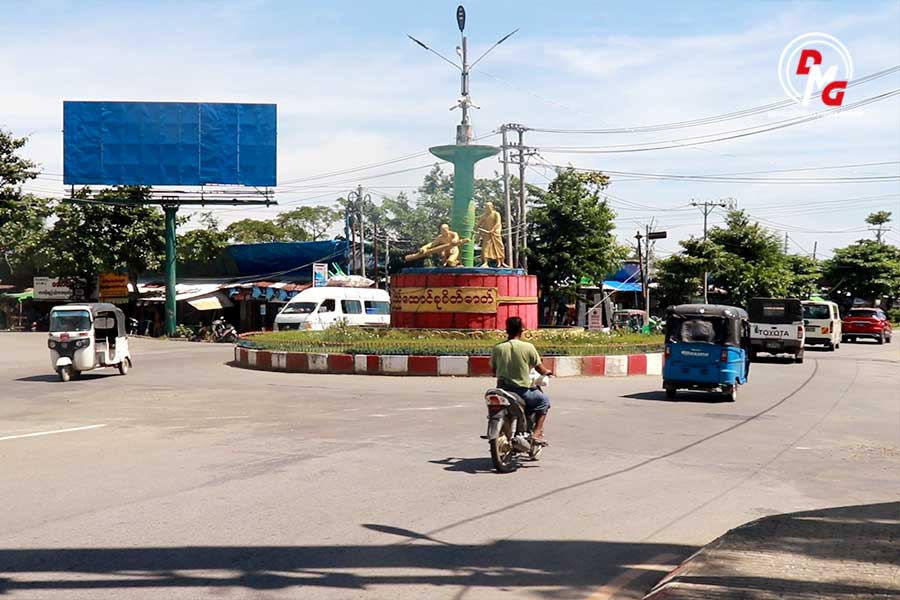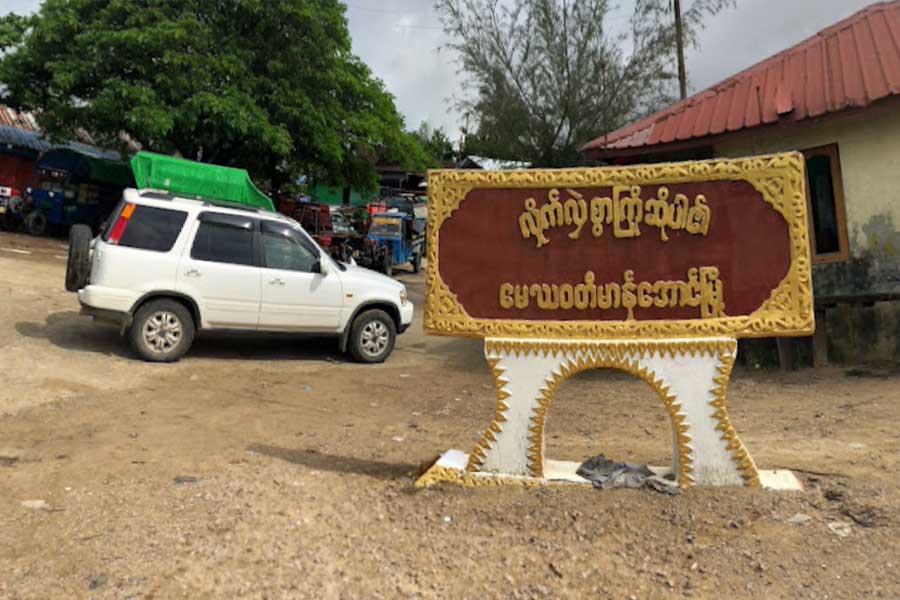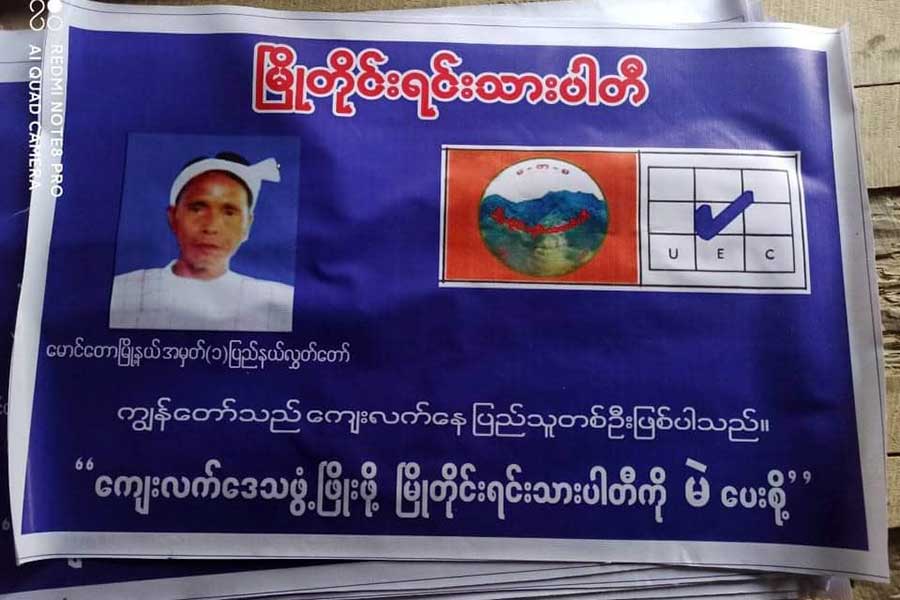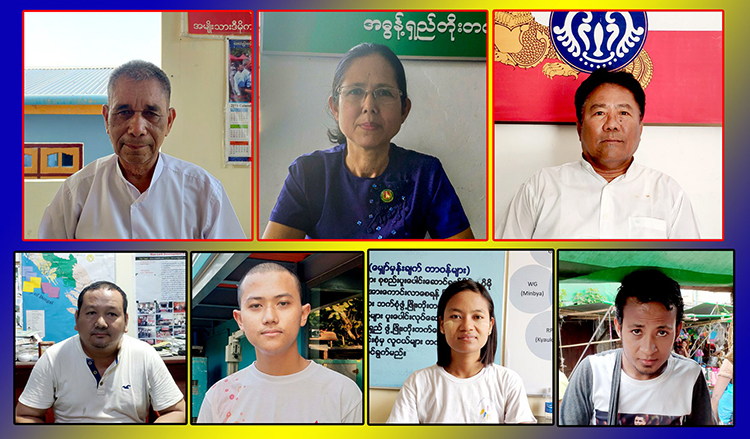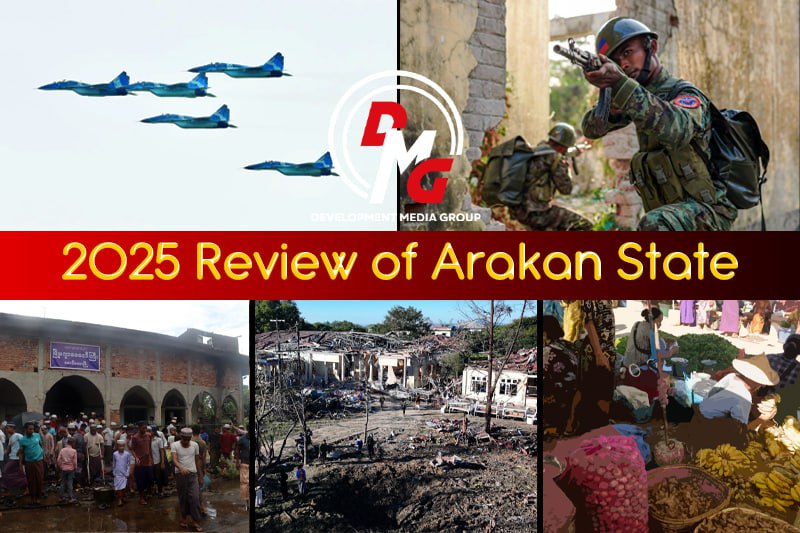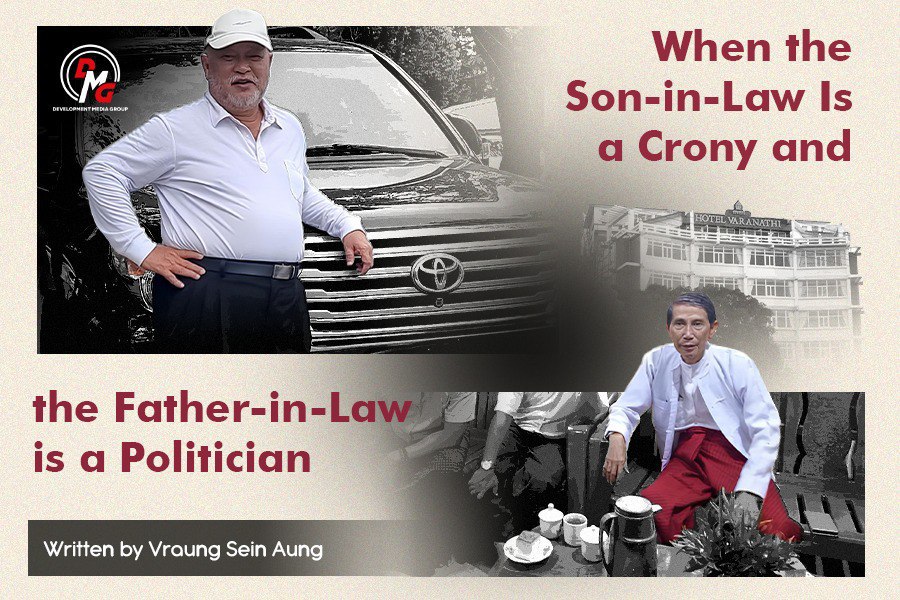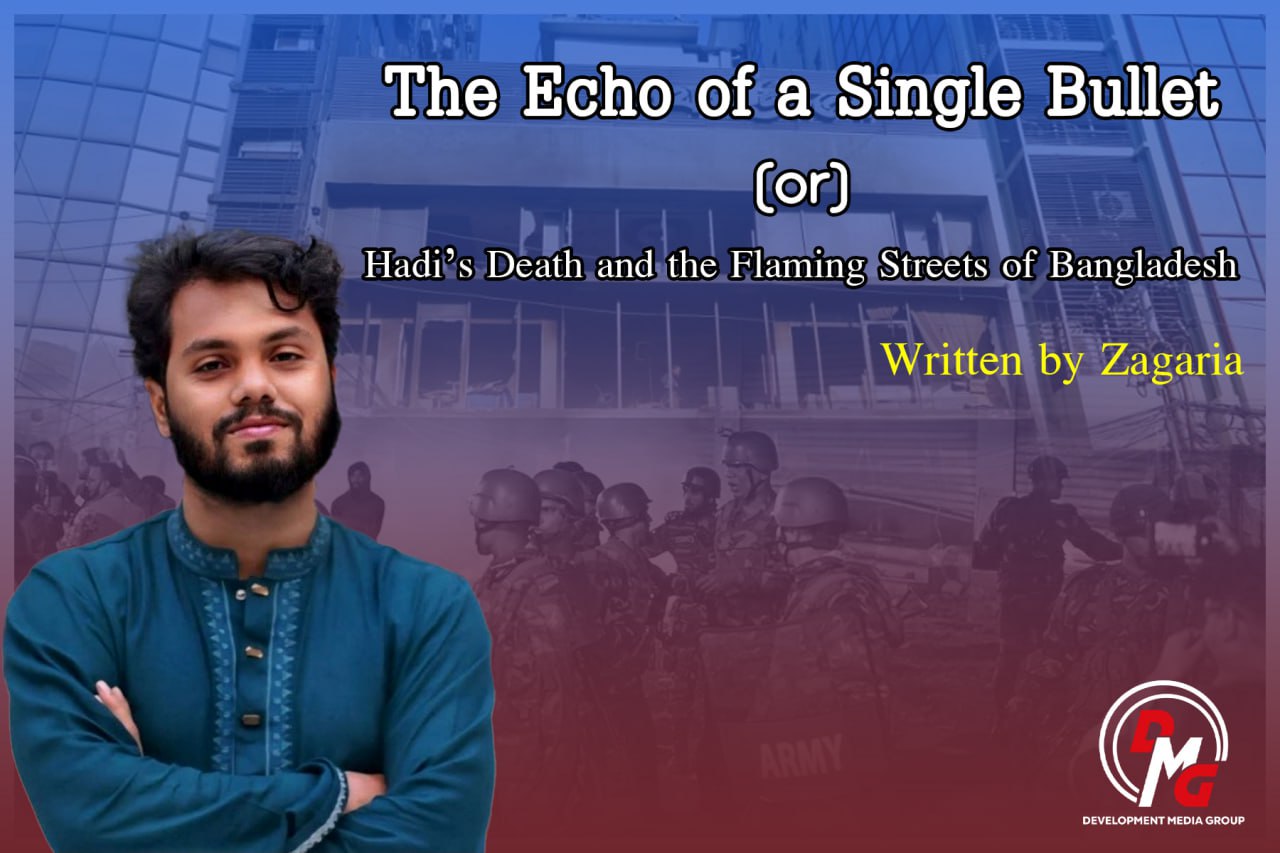Junta's Counteroffensives and the Momentum of the Revolution
Today, Myanmar's political landscape and the mass uprising against military dictatorship continue to intensify. The grand drama of the anti-junta revolution is building momentum. The leading actors on both sides are locked in a tense standoff.
30 Aug 2025
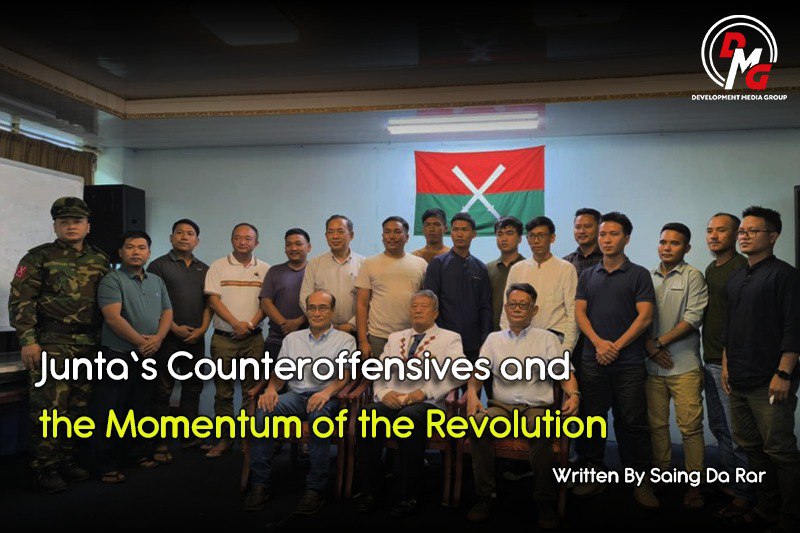
Written By Saing Da Rar
Today, Myanmar's political landscape and the mass uprising against military dictatorship continue to intensify. The grand drama of the anti-junta revolution is building momentum. The leading actors on both sides are locked in a tense standoff.
For a long time, the junta was largely on the defensive. But now it is shifting into counteroffensives-launching both defensive operations and ground assaults. The question remains: will the junta be able to regain the upper hand, or will it suffer further losses? Meanwhile, can the revolutionary forces continue to expand into new territories and hold on to the ground they have gained? These are the questions many are watching closely.
This article explores why the junta is regaining military initiative, the outcomes of its counteroffensives, current ground battles, its strengths and weaknesses, the role of drones, and its overall strategy-drawing on the analysis of political and military experts.
Who is Backing the Junta?
After the 1027 Operation, the junta's military collapse was dramatic, resulting in humiliating defeats. The Northeastern Command (Lashio), Western Command (Ann), Division Command Headquarters (Laukkaing), and even numerous strategic battalions, navy bases, and logistics hubs were overrun or lost.
To salvage this dire situation, the junta sought help from the Chinese government. Analysts note that China began applying pressure on the powerful ethnic armed organizations (EAOs) leading the revolution-KIA [Kachin Independence Army], MNDAA [Myanmar National Democratic Alliances Army], TNLA [Ta'ang National Liberation Army], and AA [Arakan Army]-in order to ease the junta's survival.
First, Beijing pressured the Three Brotherhood Alliance (3BA) to halt its offensive. MNDAA leaders were placed under Chinese restraint, followed by TNLA being pressured, and AA also being obstructed. Even the Kachin Independence Army (KIA) faced pressure.
Because of China's intervention, the Kokang offensive was halted. The junta quickly tried to claw back lost ground with relentless airstrikes and ground operations.
"China's interference has been very deep. Min Aung Hlaing is making every effort to reclaim power, relying on Beijing's support," political analyst U Than Soe Naing told DMG.
Outcomes of the Counteroffensives
Thanks to Chinese lifelines, the junta launched counteroffensives against territories under revolutionary control. By July and August, it had retaken three towns and some key roads.
Mobye (Karenni State), previously held by KNDF and allied forces. Naungcho (Northern Shan State), under TNLA control. Thabeikkyin (Mandalay Region), held by PDFs.
The junta also managed to retake Demoso (Karenni State) within 16 days of launching a major operation in July.
In Karen State, the junta announced on July 25 that it had regained the Kyone Doe-Kawkareik section of the Asian Highway, after over three months of battles with KNU-led resistance forces.
From southern Shan's Mobye, the junta pushed into Demoso, and by mid-August, state media claimed that major roads linking Loikaw and Demoso had been reopened.
Since May, the junta has been pushing along the Hopone-Hsihseng-Loikaw route to penetrate Karenni territory.
Though the coup regime had lost nearly 100 towns nationwide due to united armed resistance, by 2023-24 it recaptured Kawlin, Myawaddy, Hsihseng, and later Lashio-handed back to it without a fight under Chinese pressure on MNDAA.
With this regained footing and Chinese support, junta commanders declared that a new chapter of the war began in late July and early August 2025.
Current Battlefields Nationwide
The junta is now conducting ground offensives across the country-Kachin, Karen, Karenni, northern Shan, southern Shan, Ayeyarwady, Bago, Magway, and Sagaing.
From Naungcho, the junta has advanced toward Mogok and Kyaukme, clashing fiercely with TNLA forces. In Karenni State, it is pressing from Demoso toward Pruso. In Karen State, it is assaulting KNU-controlled positions along the Kawkareik-Myawaddy road. In Kachin State, the junta has shifted from defending against KIA's offensive in Bhamo to launching counterattacks.
The junta has reinforced its riverine supply lines on the Ayeyarwady River, deploying nine naval vessels to resupply the Bhamo front. Some lost positions have since been recaptured.
In Hpakant, the junta launched large columns from Kamaing toward KIA strongholds, facing ambushes along the way.
In Ayeyarwady Region, it is massing troops in Yegyi and Ngapudaw, threatening AA-controlled areas.
In Bago Region, junta columns are pushing through Toungoo-Pantanaw Road toward Arakan State, but AA forces are blocking them.
In Magway, heavy battles continue around Nat Yekan strategic hill in Nga Pyawt, near the Arakan border.
Arakan Front
In Kyaukphyu, intense battles are unfolding near Laipkamaw, Kulaba, Malakyun, and the naval base at Dhanyawaddy. The junta is deploying massive forces, with airstrikes, naval firepower, tanks, and drones.
AA had launched a major town-capture offensive in February 2025, seizing nearly 10 junta outposts. The junta has since clawed back Malakyun and Laipkamaw villages.
"AA is deliberately yielding small ground-it looks like bait. The junta is suffering heavy casualties in these fights," said one Kyaukphyu local.
Analysts note that Kyaukphyu is critical because of Chinese projects there. "If the junta loses Kyaukphyu, China's stance may shift. That's why the military is defending it fiercely. The battle for Arakan's towns is becoming decisive," said U Than Soe Naing.
Currently, the junta seems focused on holding Kyaukphyu, Sittwe, and Manaung until elections, while AA consolidates control over the remaining 14 townships.
Meanwhile, the junta has increased its naval presence in Sittwe, deploying over ten warships near the Kaladan River estuary.
Junta's Strengths
The junta's advantage lies in its ability to forcibly conscript troops under the military service law, combined with its heavy weapons, drones, and airpower.
By July, the junta was reportedly training up to 14 batches of conscripts, amounting to an estimated 60,000-70,000 new troops.
Its drone program is expanding, with dedicated units trained at bases in Naypyidaw, Taungnyo, and Yamethin. Its arsenal includes DJI Mavic, Autel Evo Max, Autel Alpha, fixed-wing UAVs, and S115 surveillance drones, as well as M870 quadcopters, hexacopters, and Russian-made suicide drones.
With Chinese and Russian support, the junta enjoys a technological edge in drone warfare, jammers, and electronic warfare.
Resistance's Strengths
The resistance's greatest advantage lies in the unity of ethnic armed groups and revolutionary forces nationwide, unprecedented in Myanmar's 70-year history of armed struggle.
They share a common goal-the overthrow of military dictatorship-and morale remains high. Many groups now have significant battlefield experience and strategy.
In July, KIA hosted leaders from NUG, Chin Brotherhood, Yaw Army, and Zero Guerrilla Force in Laiza, furthering coordination.
Despite being outgunned, the resistance's determination and alliances remain a formidable counterbalance to junta firepower.
How to Respond to the Junta's Counteroffensives
With the junta regaining some territories in recent weeks, revolutionary forces are finding themselves in increasingly difficult circumstances. Analysts say resistance groups must move quickly to strengthen coordination and develop effective strategies to prevent towns still under their control from slipping back into junta hands.
For the junta, a key advantage lies in its ability to deploy troops and ammunition freely, without restraint. Revolutionary forces, meanwhile, are being urged to acquire more modern weaponry and bolster their ranks in preparation for future confrontations.
"Their growing strength must be pushed back through collective force on our side. We have to meet their counteroffensive with our own. We cannot afford to simply sit and wait for their attacks," said CDM Colonel Zinyaw.
Looking ahead, questions loom over Myanmar's political trajectory and the junta's ongoing ground campaigns: How far can they advance? And how effectively will resistance groups be able to hold their ground?
The coming months will test whether the revolutionary forces can consolidate their strength and expand into new territories-or whether they will be forced to concede further ground. Across Myanmar, the battlefields are set to become even more volatile, with momentum shifting and clashes intensifying on multiple fronts.




